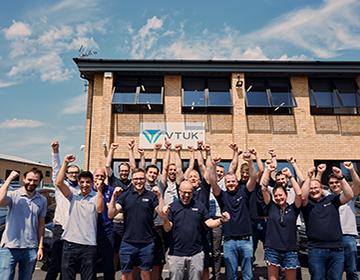
In the event of a firefighters' strike, something which is becoming increasingly frequent and happened as recently as this week, business owners should consider their safety strategy and how this may have to be altered for the duration of a strike.
While the 999 system will still be in operation, any automatic calls made from receiving centres may not result in an attendance by the fire brigade unless it has been followed up by a telephone call via 999. So in the event of an incident requiring immediate support:
DIAL 999 - GET OUT OF THE BUILDING - AND STAY OUT!
The first priority is always to preserve life and on no account should fires be fought unless the individual is confident that they can do so safely and without blocking their escape route out of the building.
Emergency cover will be available but:
Response times may be lengthened.
The time to deal with a fire may be lengthened
Additional site knowledge will be required by crews
All buildings should have fire risk assessments and Emergency Plans in place - and not just during a firefighters' strike (unless there are fewer than 5 people employed). These should be reviewed now in the event of a full firefighters' strike to ensure they are current, any identified actions have been followed through, and outstanding works completed - particularly in relation to:
Fire detection systems
Outstanding electrical works
General Housekeeping (including repairs to fire doors and keeping doors closed)
Sprinkler systems
Fire Alarm systems.
If you operate a larger or more complex site, ensure that individuals, plans and information for particularly high risk or unusual areas or activities are available to assist crews (in place of firefighters on strike) that might not be conversant with your property or processes. Fire wardens and managers should be prepared and ready to take control of any emergencies on site.
You should also review any personal emergency evacuation plans (PEEPs) for people with disabilities.
If you do not have an emergency plan, ensure as a minimum that any emergency contact information is available. The local fire authority will also issue guidance on specific arrangements and this should be followed.
Training for fire wardens should be up to date.
Specific Guidance & Amendments to Risk Assessments
Contractors
Contractors should not carry out hot work in any part of a building for the duration of a strike unless absolutely necessary. If there is an emergency, and it is work that can not be avoided, a hot work permit must be issued and a fire watch undertaken for the duration of the work and for an hour after. This includes tenant/resident demised areas for sites in multiple occupation.
Therefore, plan hot works for before or after the strike.
Do not carry out any work that involves parts of the fire alarm system being isolated.
On unmanned sites, arrangements should be in place to issue hot work permits for the duration of the strike, and observe the guidance above to avoid this work if possible.
Contractors that work at height or use fall restraint systems must similarly not undertake this work unless there is an emergency, and then under a high risk permit with additional precautions.
All contractors should have been approved and provided risk assessments for their work which includes additional information on how they will manage the risk of fire and rescue if they are undertaking high risk work during this time.
All contractors are to sign in and sign out. This must be strictly observed and checked by a manager at least twice a day during the strike.
Ensure contractors are issued with site rules and inducted so that they are clear on what is expected.
Avoid commissioning new plant unless it is an emergency.
Housekeeping
Enforce no-smoking policies
Ensure stand-alone electrical heaters are only used when absolutely necessary, and that they are never left unattended.
Make sure that electrical appliances have been switched off when rooms are vacated or if they are not being used
Ensure that fire doors are kept shut at all times as they will minimise fire spread.
Brief fire wardens the day before the strike. Ensure they are in place and know what to do in the event of an emergency.
Ensure that additional regular fire checks are undertaken everyday and everyone is vigilant.
Ensure all visitors sign in and sign out and that records are available and taken to muster points in the event of evacuation.
Ensure that open bins, skips or combustible materials are kept closed and away from buildings. Letter boxes should be sealed on unoccupied units. Ensure that any arson threats are minimised as opportunists may choose to cause criminal damage at this time.
Make sure that fire escape routes are clear and these are being regularly and robustly checked.
Clear any combustible materials from offices and use this as an opportunity to archive paperwork and tidy escape routes.
Ensure your fire log book is up to date.
Ensure electrical testing is up to date and any outstanding works have been actioned.
Food Preparation Areas
Consider how any cooking facilities will be used for the duration; ensure that you have a fire blanket and CO2 extinguisher available and ready to use in the vicinity of the kitchen.
Do not leave the kitchen unattended when you are preparing food and consider avoiding the use of fat fryers and grills if possible.
Ensure that cleaning rotas are up to date and deep cleaning of grills and ducts has been undertaken recently.
Rescue
Where you rely on the fire brigade to deal with lift rescue, you should consider carefully if it would be wise to take the lift out of operation except for use by disabled persons and where manual handling would otherwise pose an increased risk.
Similarly avoid work involving rope access for the duration of the strike
Consider late night working and if lifts are taken out of service ensure that they are clearly signed.
Ensure that lift emergency devices and telephones are operating effectively.
Do not undertake work in confined spaces unless there is an emergency and then under a permit to work system for confined spaces.
General
Consider increasing fire warden cover.
Ensure that you have considered how disabled people will be evacuated. If you use refuge points, ensure fire wardens know what to do when giving the emergency service information on where they are located.
Ensure IT systems are backed up and protected.
Ensure business continuity plans are in place.
Check general security arrangements, including out-of-hours.
If you are in a flood prone area, contact your local emergency planning officer at the local authority and follow their guidance.
In short, all business owners should remain vigilant and prepared as fire can have a devastating impact. Taking a responsible approach, enforcing arrangements you already have in place, and delaying high risk work where possible will ensure the risk of an incident is appropriately managed.
*Louise Hosking MCIEH CMIOSH RMaPS AIEMA SIIRSM is a Chartered Safety & Health Practitioner and Director at Hosking Associates Ltd.
















Comments